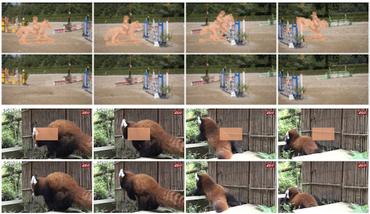VQ-NeRV: A Vector Quantized Neural Representation for Videos
Implicit neural representations (INR) excel in encoding videos within neural networks, showcasing promise in computer vision tasks like video compression and denoising. INR-based approaches reconstruct video frames from content-agnostic embeddings, which hampers their efficacy in video frame regression and restricts their generalization ability for video interpolation. To address these deficiencies, Hybrid Neural Representation for Videos (HNeRV) was introduced with content-adaptive embeddings. Nevertheless, HNeRV's compression ratios remain relatively low, attributable to an oversight in leveraging the network's shallow features and inter-frame residual information. In this work, we introduce an advanced U-shaped architecture, Vector Quantized-NeRV (VQ-NeRV), which integrates a novel component--the VQ-NeRV Block. This block incorporates a codebook mechanism to discretize the network's shallow residual features and inter-frame residual information effectively. This approach proves particularly advantageous in video compression, as it results in smaller size compared to quantized features. Furthermore, we introduce an original codebook optimization technique, termed shallow codebook optimization, designed to refine the utility and efficiency of the codebook. The experimental evaluations indicate that VQ-NeRV outperforms HNeRV on video regression tasks, delivering superior reconstruction quality (with an increase of 1-2 dB in Peak Signal-to-Noise Ratio (PSNR)), better bit per pixel (bpp) efficiency, and improved video inpainting outcomes.
PDF Abstract




